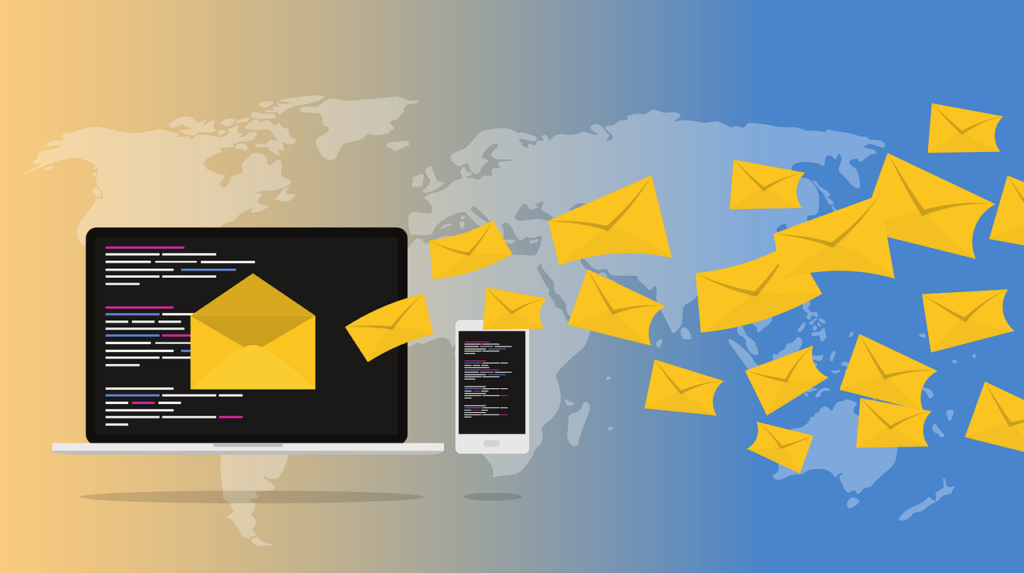Whether you’re a seasoned marketer or new to the game, reengagement campaigns are a powerful tool for reconnecting with your audience. Get ready to uncover strategies, tips, and best practices to revitalize your subscriber base and boost engagement. Let’s dive in and discover how to reignite the spark with your inactive subscribers!
Understanding Inactivity
Inactivity among subscribers is a challenge that many businesses, regardless of their size, face. Understanding the underlying reasons for subscriber inactivity is crucial when it comes to creating successful reengagement campaigns. It’s important to personalize reengagement efforts based on the specific reasons for subscriber inactivity, as this tailored approach can yield better results. By monitoring subscriber engagement metrics, businesses can gain valuable insights into the patterns of inactivity, which in turn can inform and enhance reengagement strategies.
Identifying Inactive Subscribers
Identifying inactive subscribers involves analyzing engagement data such as open rates, click-through rates, and frequency of interaction. By delving into these metrics, businesses can gain valuable insights into the behavior of their inactive subscribers. Segmenting inactive subscribers based on their last interaction with the brand can help tailor reengagement strategies, allowing for a more personalized approach to win back these subscribers. Furthermore, sending targeted surveys or feedback forms can also aid in identifying the factors contributing to subscriber inactivity, providing businesses with direct feedback from their audience. Additionally, utilizing customer relationship management (CRM) tools can streamline the process of identifying inactive subscribers, making the reengagement efforts more efficient and effective.
Reasons for Subscriber Inactivity
Subscriber inactivity can arise from various factors, including receiving irrelevant content, experiencing email fatigue, or undergoing changes in interests or preferences. Additionally, technical issues like email deliverability problems or landing in the spam folder can also lead to subscriber inactivity. Moreover, a lack of engagement may stem from a disconnect between subscriber expectations and the actual content provided by the brand. It’s important to note that life events or seasonal changes can also have an impact on subscriber activity, leading to periods of inactivity. Understanding these potential reasons for inactivity is crucial in developing effective reengagement strategies.
Crafting Compelling Reengagement Campaigns
Understanding your audience’s interests and pain points is essential when it comes to tailoring your reengagement content. By delving into what resonates with your subscribers, you can create content that speaks directly to their needs and preferences. Incorporating limited-time offers or exclusive deals can help create a sense of urgency, motivating inactive subscribers to re-engage with your brand. Additionally, personalized recommendations based on previous interactions can demonstrate that you value their engagement and can pique their interest. It’s crucial to include a clear call-to-action that prompts subscribers to take action, whether it’s to revisit your website or make a new purchase, guiding them towards re-engaging with your brand.
Creating Catchy Subject Lines
To enhance your reengagement campaigns, consider using intriguing questions or teasers in the subject line to captivate the subscriber’s interest right from the start. Keeping the subject line concise and impactful can contribute to higher open rates, as subscribers are more likely to engage with content that immediately resonates with them. Strategically incorporating emojis or symbols can also help grab attention without overwhelming the recipient, adding a touch of visual interest to the subject line. Additionally, A/B testing different subject lines can provide valuable insights into the most effective approaches for reengaging inactive subscribers, allowing you to refine your strategies based on real-time data and feedback.
Designing Engaging Content
To make your reengagement content more engaging and shareable, consider utilizing visually appealing graphics or videos that can capture the attention of your inactive subscribers. Additionally, telling a compelling story that resonates with their emotions and experiences can create a strong connection and pique their interest in re-engaging with your brand. Furthermore, providing valuable incentives such as discounts, free resources, or loyalty rewards can motivate inactive subscribers to take action. It’s also crucial to ensure mobile responsiveness for all reengagement content, as this caters to subscribers accessing emails on their smartphones, ensuring they have a seamless experience regardless of the device they use.
Choosing the Right Channel
When reengaging inactive subscribers, it’s essential to consider the diverse preferences of your target audience to choose the most effective reengagement channels. Evaluate the impact of email, social media, SMS, and other channels based on their effectiveness in reviving subscriber engagement. Personalizing your approach by tailoring reengagement strategies to each subscriber’s behavior and engagement history can significantly enhance the likelihood of success. Additionally, implementing A/B testing can provide valuable insights into the most effective channel or combinations of channels, allowing you to refine your reengagement strategies based on real-time data and feedback.
Email Reengagement Strategies
Crafting compelling subject lines is essential to entice inactive subscribers to open your reengagement emails. By offering exclusive promotions or content as an incentive for subscribers to re-engage with your emails, you can create a sense of urgency and increase their interest in your brand. Additionally, using targeted segmentation to tailor email content based on subscriber interests and past interactions can make your reengagement emails more personalized and relevant. It’s crucial to include a clear call-to-action that prompts subscribers to take action, guiding them towards re-engaging with your brand and making the most of the content you’re providing.
Social Media Reengagement Tactics
To effectively re-engage inactive followers on social media, it’s crucial to create visually appealing posts that capture their attention and prompt them to interact with your content. Utilizing interactive elements such as polls, quizzes, and live sessions can encourage inactive subscribers to participate and re-engage with your brand. Additionally, make sure to respond promptly to comments and direct messages from inactive followers, initiating meaningful conversations that can reignite their interest. Collaborating with influencers or partners can also help extend the reach of your re-engagement efforts, allowing you to connect with a broader audience and bring inactive followers back into the fold.
Incentivizing Action
Offering exclusive promotions, such as enticing discounts and special offers, can serve as a powerful incentive to reengage inactive subscribers. By tailoring personalized recommendations based on their previous interactions, you can make them feel valued and understood, increasing the likelihood of reigniting their interest. Creating a sense of urgency through limited-time incentives can prompt inactive subscribers to take action and revisit your brand, driving them towards active engagement. Additionally, rewarding their reengagement with loyalty points or special rewards can further motivate them to become active participants once again.
Offering Exclusive Promotions
Exclusive promotions, such as “come back and get 50% off,” can be highly effective in luring inactive subscribers back to engage with the brand’s offerings, creating a sense of excitement around returning to the brand. Additionally, implementing limited-time offers like “free shipping for returning customers” can instill a sense of urgency and drive reengagement among inactive subscribers, prompting them to take immediate action. Furthermore, offering special discounts tailored specifically for inactive subscribers not only makes them feel valued but also encourages them to reengage with the brand, fostering a renewed sense of connection and interest. Moreover, providing personalized promo codes for dormant subscribers can reignite their interest in making new purchases from the brand, further strengthening their loyalty and engagement.
Providing Personalized Recommendations
Tailoring product recommendations based on previous purchase history is a powerful way to demonstrate to inactive subscribers that the brand genuinely understands their individual preferences and needs. By sending personalized emails recommending items similar to those they have previously purchased, the brand can reignite the interest of inactive subscribers in engaging with the brand once again. Furthermore, utilizing browsing history data to suggest products that align with the specific interests of dormant subscribers can effectively reengage them with the brand’s offerings. Moreover, offering curated selections based on past interactions can serve as a gentle reminder to inactive subscribers of products they may have overlooked, prompting them to revisit the website and explore these offerings once more.
Measuring Success
Tracking the open rates and click-through rates of reengagement emails is crucial to measure the success of the campaign. Monitoring the conversion rate of inactive subscribers who have engaged with the reengagement campaign provides valuable insights into its effectiveness. Analyzing the increase in overall engagement and interaction on various channels after launching a reengagement campaign helps gauge its success. Assessing the change in the number of inactive subscribers who become active again is a key metric for measuring the success of reengagement efforts. These metrics collectively paint a comprehensive picture of the reengagement campaign’s impact and efficacy, guiding future strategies and optimizations for sustained subscriber reactivation and brand growth.
Key Metrics to Track
When evaluating the performance of reengagement campaigns, it’s crucial to track essential metrics such as the open rate, click-through rate, conversion rate, and churn rate. These metrics provide valuable insights into subscriber behavior and the effectiveness of the campaign. Additionally, monitoring the response rate to special offers or incentives can offer meaningful data about subscriber engagement. Tracking the time it takes for inactive subscribers to re-engage after receiving a reactivation email is also key in assessing campaign performance. Furthermore, analyzing the lifetime value of re-engaged customers compared to newly acquired customers provides a comprehensive understanding of the impact and success of reengagement efforts. These metrics collectively offer a holistic view of the campaign’s performance and help in shaping future strategies for sustained subscriber reactivation and brand growth.
Analyzing Reengagement Campaigns’ Performance
Segmenting subscriber data based on engagement levels before and after a reengagement campaign enables a thorough analysis of its effectiveness. By comparing the performance of various types of content or messaging utilized in reengagement emails, valuable insights can be gained regarding what resonates with inactive subscribers. Additionally, evaluating the effect of personalized recommendations or product suggestions on the engagement levels of inactive subscribers is crucial in assessing the campaign’s performance. Furthermore, assessing the impact of A/B testing different subject lines, visuals, or calls-to-action on re-engagement metrics is instrumental in optimizing strategies for future campaigns.
Conclusion
In conclusion, understanding subscriber inactivity is crucial for crafting successful reengagement campaigns. Identifying the reasons behind subscriber inactivity provides valuable insights that can be utilized in creating compelling reengagement content. Crafting catchy subject lines and designing engaging content are essential elements that can capture the attention of inactive subscribers.Choosing


